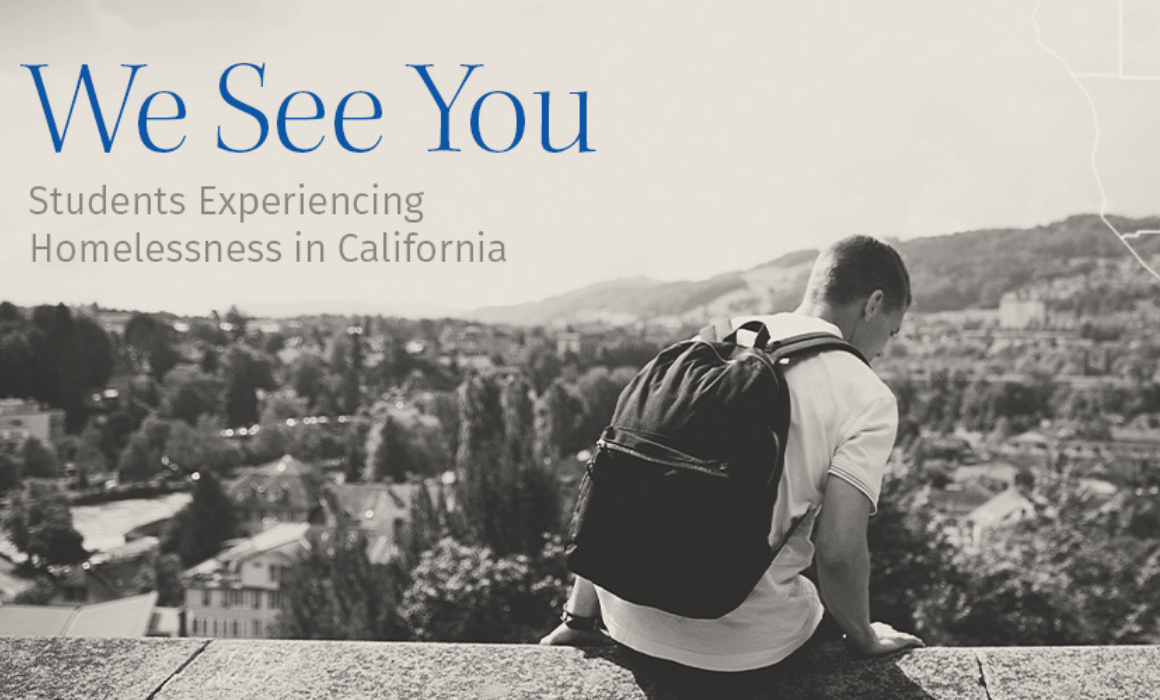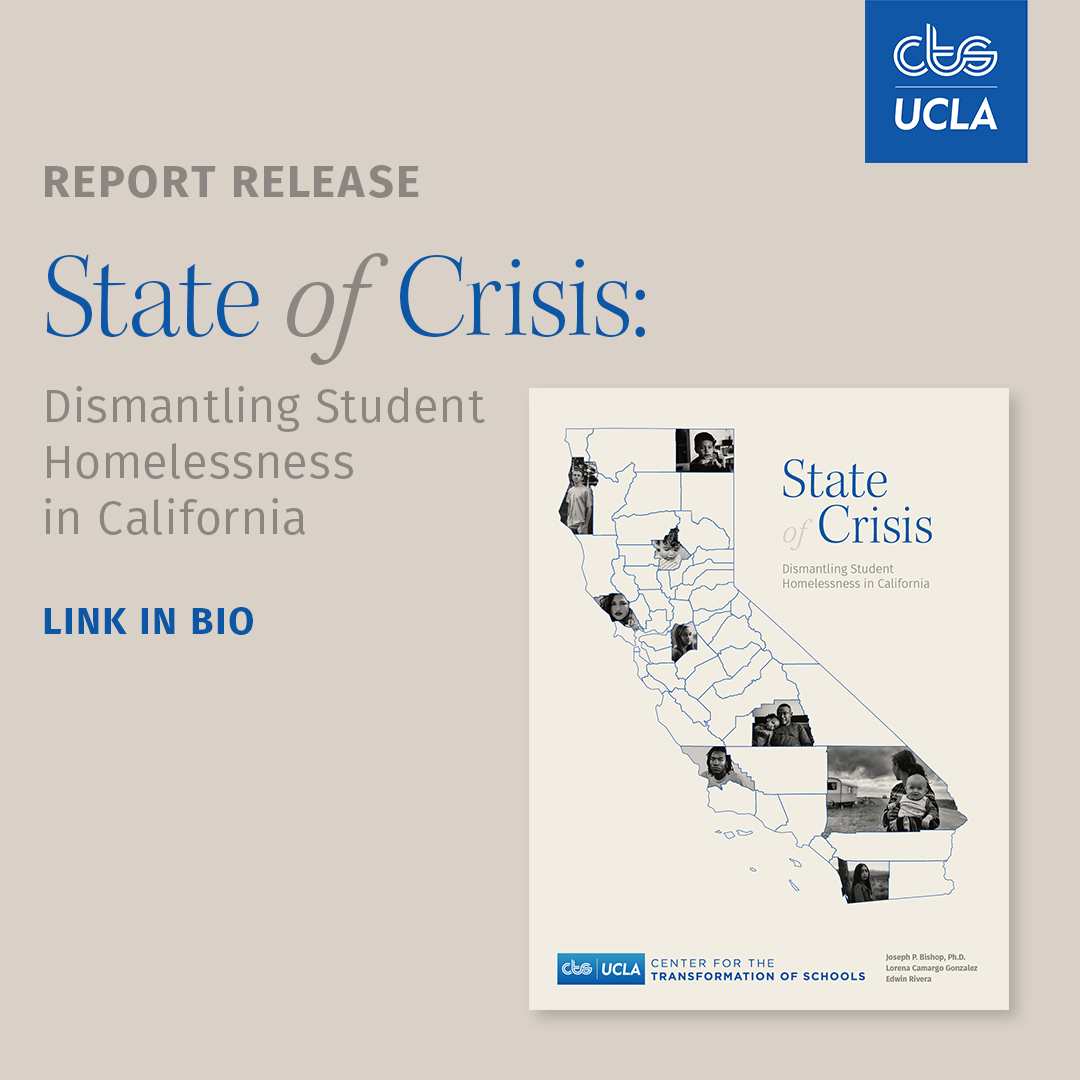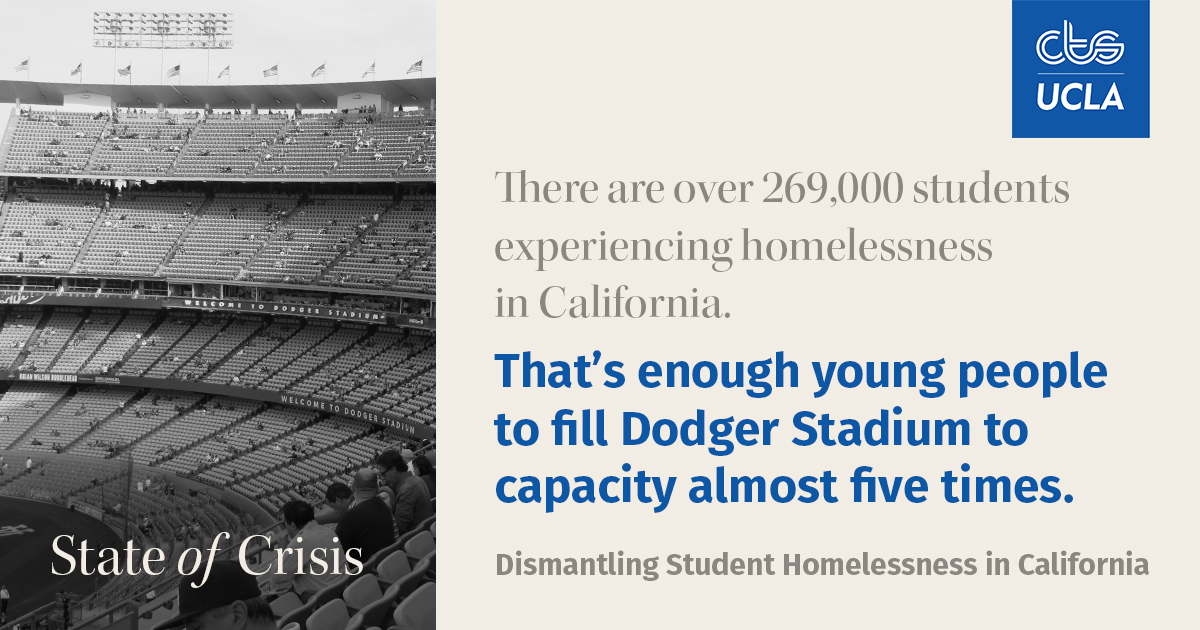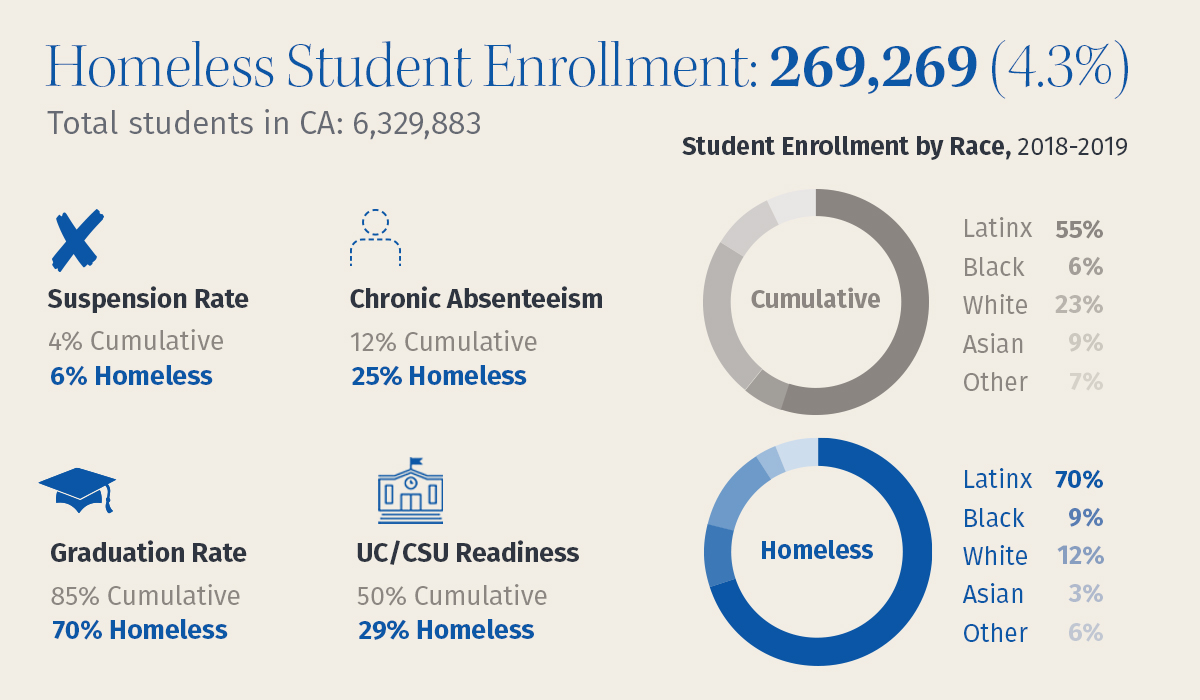
 More than 269,000 California K-12 students are homeless – 4.3 percent of all students – and 4 million are “economically disadvantaged” while federal, state and local agencies lack the resources and capacity to support their unique needs, according to “State of Crisis: Dismantling Student Homelessness in California,” a new report released today by the Center for the Transformation of Schools (CTS) at UCLA.
More than 269,000 California K-12 students are homeless – 4.3 percent of all students – and 4 million are “economically disadvantaged” while federal, state and local agencies lack the resources and capacity to support their unique needs, according to “State of Crisis: Dismantling Student Homelessness in California,” a new report released today by the Center for the Transformation of Schools (CTS) at UCLA.
Over the past decade, the number of K-12 students experiencing homelessness has increased by more than 48 percent. California college students are also experiencing significant impacts of poverty and inequality at astounding rates – 1 in 5 community college students, 1 in 10 California State University (CSU) students and 1 in 20 who attend University of California (UC) campuses have experienced homelessness in the last year.
This crisis impacts Latinx and Black students at a disproportionate rate, with these students comprising 79 percent of homeless students while only 59 percent of the K-12 student population, according to 2018-2019 enrollment statistics. These students are almost twice as likely to be suspended or miss an extended period of school to absenteeism, experience lower graduation rates, and to be less ready for college than their non-homeless peers (see county-by-county statistics here).
“Broader awareness about the unique needs of the population of students experiencing homelessness can help improve educational outcomes,” the report states. “By highlighting the perspectives of students who experience homelessness, this report can potentially catalyze sustained and strategic action among policymakers, educators and concerned citizens to ameliorate this growing crisis.”

The CTS report includes seven key findings:
- Current professional capacity to support students experiencing homelessness is inadequate: comprehensive, targeted and coordinated training is needed.
- Homeless liaisons are struggling to effectively respond to growing needs in their community, requiring more resources and staffing.
- The prevalence of Latinx and Black students experiencing homelessness requires more racially and culturally responsive strategies in education practice and policy.
- Students experiencing homelessness are often overlooked or misunderstood in school settings, which can result in negative educational experiences.
- Better coordination is needed between child welfare, housing and education stakeholders to alleviate barriers for students and families.
- Community-based organizations and nonprofits provide a critical function as part of an ecosystem of support for students and can get resources to families quickly.
- The bookends of education, early education and higher education, are an essential part of a coordinated response to student homelessness, from cradle to college.
The report also discusses the impacts of the COVID-19 public health crisis on students who are homeless and the critical role schools play in providing valuable resources such as food and shelter to vulnerable populations. As schools reopen when it is safe to do so, they will face an increased need for improved coordination of services for homeless students.
“The COVID-19 pandemic has accelerated many of the preexisting inequities present for students and families profoundly impacted by poverty and inequality in California,” the report states.

The “State of Crisis” report authors (Joseph P. Bishop, Lorena Camargo Gonzalez and Edwin Rivera) make a series of policy recommendations for all levels of government, from federal all the way down to school districts, noting that coordination is necessary because no one government agency has the resources or reach to be effective working in isolation. At the local level, the report recommends:
- Ensuring that school district resources for students experiencing homelessness are aligned with Local Control Accountability Plan (LCAP) goals and taking into account the likely amount of need.
- Encouraging the development of districtwide strategies for identifying and serving students experiencing homelessness so that responsibility does not fall solely upon the district’s homeless liaison.
- Adopting a Multi-Tiered System of Support (MTSS) framework to organize schools around the needs of students experiencing homelessness. Reducing suspensions that disproportionately impact students with housing insecurity and students of color, and embracing alternative strategies to punitive discipline approaches.
“An aggressive response … should include policy actions at the local, state and federal level to address the student homelessness crisis,” the report states. “Key decision-makers from the public and private sector, including students, educators and lawmakers must work together to make the best use of limited resources in the face of a growing challenge.”